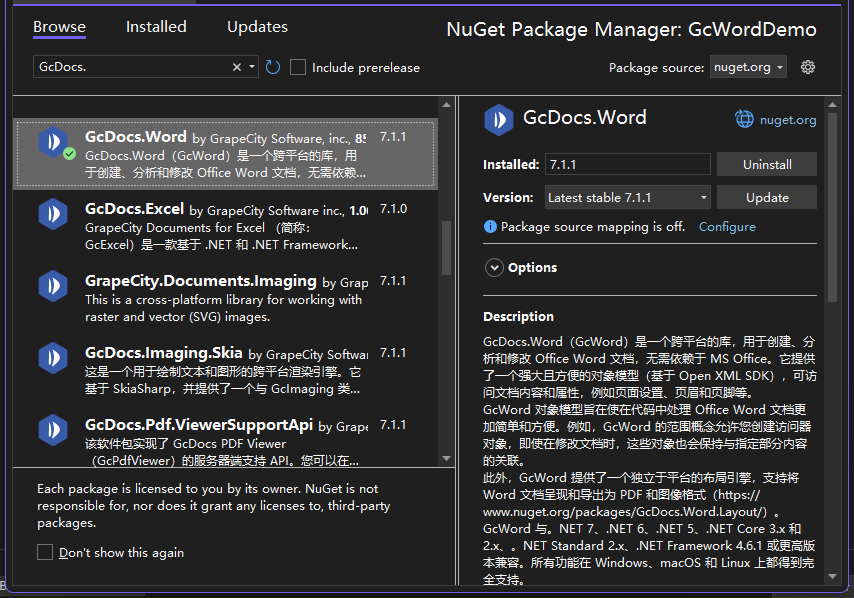[]
The GcWord packages are fully supported on Visual Studio 2017 or later for Windows, Visual Studio for MAC, and Visual Studio Code for Linux and are compatible with the following:
GcWord references are available through NuGet, a Visual Studio extension that adds the required libraries and references to your project automatically. To work with GcWord, you need to have following references in your application:
Reference | Purpose |
|---|---|
To use GcWord in an application, you need to reference (install) just the GrapeCity.Documents.Word package. It pulls in the required infrastructure packages. | |
For image handling, you need to reference (install) the GrapeCity.Documents.Imaging package. | |
GrapeCity.Documents.DX.Windows is an infrastructure package used by GrapeCity.Documents.Common.Windows. You do not need to reference it directly. |
In order to use GcWord in a .NET Core, ASP.NET Core, .NET Framework application (any target that supports .NET Standard 2.0), install the NuGet packages in your application using the following steps:
Open Visual Studio.
Create any application (any target that supports .NET Standard 2.0).
Right-click the project in Solution Explorer and choose Manage NuGet Packages.
In the Package source on top right, select nuget.org.
Click Browse tab on top left and search for "GcDocs".
On the left panel, select GcDocs.Word
On the right panel, click Install.

In the Preview Changes dialog, click OK and choose I Accept in the next screen.
Open Visual Studio for Mac.
Create any application (any target that supports .NET Standard 2.0).
In tree view on the left, right-click Dependencies and choose Add Packages.
In the Search panel, type "GcDocs".
From the list of packages displayed in the left panel, select GcDocs.Word and click Add Packages.
Click Accept.
This automatically adds references of the package and its dependencies to your application.
Open Visual Studio Code.
Install Nuget Package Manager from Extensions.
Create a folder "MyApp" in your Home folder.
In the Terminal in Visual Studio Code, type "cd MyApp"
Type command "dotnet new console"Observe: This creates a .NETCore application with MyApp.csproj file and Program.cs.
Press Ctrl+P. A command line opens at the top.
Type command: ">"Observe: "Nuget Package Manager: Add Package" option appears.
Click the above option.
Type "GcDocs" and press Enter.Observe: GrapeCity packages get displayed in the dropdown.
Choose GcDocs.Word.
Type following command in the Terminal window: "dotnet restore"
This adds references of the package to your application.